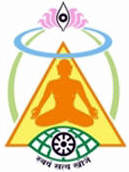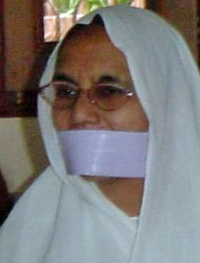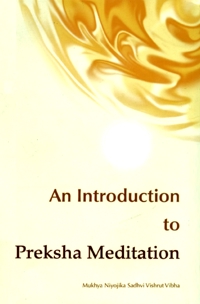
Upsampada
Upsampada serves as a fertilizer in the garden of spiritual life. Without making it an integral part of our life, we cannot realize the fruits of meditation. Upsampada not only enhances the spiritual level but also improves the social, professional, intellectual, physical, and emotional aspects of our life. One who wants to practice Preksha Meditation must obey the following upsampada (guiding principles):
- Bhavakriya (mind-body harmony)
- Pratikriya virati (restraint of reaction)
- Maitri (universal amity)
- Mit ahar (restraint in eating)
- Mit bhashan (restraint of speech)
Bhavakriya
Bhava means the intentions, feelings, or thoughts behind any activity. Kriya means action. Bhaavakriya is the inner aspect of any activity. It implies the unison of mind, emotions and activity. There are three dimensions of bhaavakriya.
If we can concentrate on the actions we perform, then it becomes much easier to practice perpetual meditation. Time bound meditation can be practiced twice or thrice a day but bhaavakriya is a kind of meditation which can be practiced through out the day round the clock.
Pratikriya virati
Newton's third law for the non-living objects states 'For every action there is an equal and opposite reaction.' The realistic law for all living beings is 'To be action-oriented and not reaction oriented'. However, reaction has become an integral part of the human nature, in spite of the fact that every individual desires for freedom. Everything that we do including talking, hearing, seeing, eating, reading, etc. both involves and generates some sort of reaction. The realistic path to freedom is to free our consciousness from impurities of thoughts and emotions. To defeat anger, ego, deceit, and any other reactive attitude, we need to practice equanimity and restraint from reactions of all sorts.
Maitri
As a good human being, one should possess the feeling towards all living beings. Friendliness should not be confined to restricting oneself from entering a quarrel or argument. Amity means seeing and recognizing oneself in others. One should consider others as equal to the self, neither inferior nor superior. The feeling of amity should be free from personal gains and should apply universally to all living beings. It builts a strong foundation for Preksha Meditation by relieving oneself from attachment and aversion. This will change our attitude and outlook towards every other individual. The practitioner of Preksha Meditation should nurture, display, and propagate the feeling of friendliness towards all living beings.
Mit ahar
Food provides fuel to the body, while the actions feed the mind. In other words, in order to control mind we need to control the body and vice versa. Eating is important to keep the body functioning but restrained eating is the key to a happy and healthy life. Unhealthy eating habits cause laziness and drowsiness. Over eating or eating unpalatable food is prohibited for any sadhak, a practitioner. It is one of the biggest obstacles in the path of meditation. A sadhak can reach the depth of meditation simply by controlling his diet.
Mit bhashan
Speech is an important and one of the strongest media to express ones feelings. Only through expression of our views and feelings we can remain part of the society. Unfortunately, most of the time we speak a lot and lose energy and time. Hence it is important for us to first learn the art of speaking and then restraint of speech. Manifestation of higher degree of meditation also requires to engross in inner silence and peace. If a practitioner is unable to maintain total silence, he may practice restraint of speech. One should always think twice before speaking and avoid use of words that hurt others. Restraint speech is a valuable tool for leading a good and successful life.
Conclusion
These upsampadas (guiding principles) of Preksha Meditation are not only essential during the practice of Preksha Meditation but also in every day life. They are the foundation for inculcating good habits and for shaping a healthy, happy, and successful life. Mind-body harmony, restraint from reaction, universal amity, restraint of speech, and restraint in eating can not only protect us from many physical, emotional, and behavioural problems, but can also enhance our spiritual life and make us admirable by others.
 Sadhvi Vishrut Vibha
Sadhvi Vishrut Vibha

